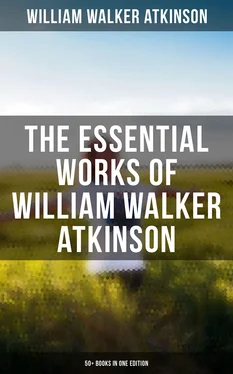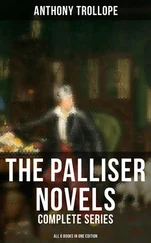I. Metaphor , or “a figure of speech by which a word is transferred from an object to which it properly belongs to another, in such a manner that a comparison is implied though not formally expressed.” Thus: “He is a tiger,” or “She is a cat.” There is a close resemblance between a metaphor and a simile , the difference consisting of words implying comparison, such as “like” or “as.” For instance: “He is a fox,” is a metaphor ; while, “He is like a fox” is a simile . It will be seen, therefore, that every metaphor may be converted into a simile by extension; and that every simile may be converted into a metaphor, by condensation.
Hill says: “All writers agree that, other things being equal, the metaphor is more forcible than the simile; but opinions differ as to the true explanation of the fact. According to Dr. Whateley, who adopts the idea from Aristotle, the superiority of the metaphor is ascribable to the fact that ‘all men are more gratified at catching the resemblance for themselves, than at having it pointed out for them;’ according to Herbert Spencer, ‘the great economy it achieves would seem to be the more probable cause:’ but neither explanation is altogether satisfactory.” The following quotation will give a general idea of the metaphor and the simile, combined and contrasted in the same paragraph:
“Some minds are wonderful for keeping their bloom in this way, as a patriarchal gold-fish apparently retains to the last its youthful illusion that it can swim in a straight line beyond the encircling glass. Mrs. Tulliver was an amiable fish of this kind; and, after running her head against the same resisting medium for thirteen years, would go at it again to-day with undulled alacrity.”—GEORGE ELIOT: Mill on the Floss .
Writers and speakers frequently employ metaphors containing two or more images which are incongruous and which fail to blend—these are called “mixed metaphors.” The incongruous figurative jumble arising from the use of the mixed metaphor is frequently amusing and always ludicrous. For instance the old “bull:” “Every time he opens his mouth, he puts his foot in it ;” or: “With swift rapier-thrusts of irony, the prosecuting attorney applied the thumbscrews to the unwilling witness.” Or the famous instance of Dickens, who said, speaking of the street lamps: “At night, when the lamplighter had let these down, and lighted and hoisted them again, a feeble grove of dim wicks swung in a sickly manner overhead, as if they were at sea .” Or that of De Quincy who said: “the howling wilderness of the psalmody in most parish churches of the land countersigns the statement.” Or, “Boyle was the father of chemistry and brother to the Earl of Cork .” Or “A torrent of superstition consumed the land.” Or, “Trothal went forth with the stream of his people, but they met a rock: for Fingal stood unmoved; broken, they rolled back from his side. Nor did they roll in safety; the spear of the king pursued their flight .”
II. Allegory , or “A discourse designed to convey a different meaning from that which it directly expresses; a figure of speech in which the speaker or writer gives forth not only the actual narrative, description, or whatever he wishes to present, but one so much resembling it as on reflection to suggest it, and bring home to the mind with greater force and effect than if it had been told directly.” An allegory is really an extended metaphor . An allegory may be short, brief and pointed, in which case it is known as a “fable” or “parable.” The fables of Æsop, and the Parables of the Bible, are forms of allegory. Bunyan’s “Pilgrim’s Progress” is probably the best example of extended allegory. Spencer’s “Faerie Queen” is a moral allegory. Macaulay says: “Bunyan is indeed as decidedly the first of allegorists, as Demosthenes is the first of orators, or Shakespeare the first of dramatists.” The following is an example of a brief allegory:
“Thou hast brought a vine out of Egypt. Thou hast cast out the heathen, and planted it. Thou preparedst room before it, and didst cause it to take deep root, and it filled the land. The hills were covered with the shadow of it, and the boughs thereof were like the goodly cedars.”
III. Simile , or “the likening of two things, which though differing in many respects, have some strong point or points of resemblance.” We have explained the distinction between the metaphor and the simile . In the metaphor the resemblance between the original object and the adopted image is boldly assumed ; while in the simile the resemblance is formally stated by the words “as” or “like.” The Songs of Solomon are filled with beautiful similes. The following from Ossian is an example of the use of the simile:
“Pleasant are the words of the song, said Cuchullin, and lovely are the tales of other times. They are like the calm dew of the morning on the hill of roes, when the sun is faint on its side, and the lake is settled and blue in the vale.”
IV. Synecdoche , or “a figure of speech by which the whole of a thing is taken for the part, or a part for the whole, as the genus for the species, or the species for the genus.” As for example: “All hands on deck;” “The sea is covered with sails ;” “Our hero was gray, but not from age;” “Ten thousand. were on his right hand .”
V. Metonymy , or “a figure of speech by which one word is put or used for another; as when the effect is substituted for the cause; the inventor for the thing invented; the material for the thing made; etc.” For example we say, “He keeps a good table ;” or “We read Virgil ;” or “The poorest man in his cottage may bid defiance to all the force of the Crown ;” or “He petitioned the Bench , being a member of the Bar .” There is a very, close resemblance between metonymy and synecdoche .
In addition to the above-mentioned Rhetorical Figures of Imagery, there are several Rhetorical Figures of Arrangement, in which words, phrases, clauses, sentences, figures, etc., are arranged in a peculiar or striking way. The principal Figures of Arrangement are as follows:
I. Climax , or “a figure in which the sense rises gradually step by step in a series of images, each exceeding its predecessor in force and dignity,” or “the arrangement of a succession of words, clauses, or sentences, in such a way that the weakest may stand first, and that each in turn, to the end, may rise in importance, and make a deeper impression on the mind than that which preceded it. As for example: “It is an outrage to bind a Roman citizen; it is a crime to scourge him; it is almost parricide to kill him; but to crucify him—what shall I say of this?” or, “Who shall separate us from the love of Christ? Shall tribulation, or distress, or persecution, or famine, or nakedness, or peril, or sword?”
II. Antithesis , or “sharp opposition between word and word, clause and clause, sentence and sentence, or sentiment and sentiment, specially designed to impress the reader or hearer.” As for example: “He had covertly shot at Cromwell , he now openly aimed at the Queen ;” “To err is human, to forgive divine;” “Though grave , yet trifling ; zealous , yet untrue .” Its importance as an . effective instrument of expression is admitted by all the authorities. As the author of Lacon says: “To extirpate antithesis from literature altogether, would be to destroy at one stroke about eight-tenths of all the wit, ancient and modern, now existing in the world.”
Читать дальше












